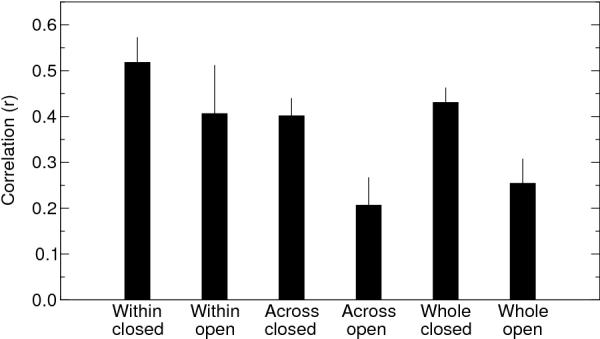
Click on the image to see a PDF version (for zooming in)
Fig. 13.19. Contour completion performance in closed vs. open
contours. The average correlation coefficients between the MUA
sequences in the complete and incomplete triangles (labeled "closed"
and "open") of Figure 13.16 are shown, calculated over two trials and
different groups of contour elements. Although the differences in
correlation within each side are not significant (p > 0.2), the
elements in the closed contour are significantly more correlated
across the sides and within the whole object than in the open contour
(p < 0.004), consistent with psychophysical results (Section
13.1.1). The correlations between contour and background elements and
within the background were significantly weaker in both cases (p <
0.03), indicating that both contours were perceived as single
objects. The PGLISSOM model therefore provides independent
computational support to the theory that closed contours are salient
because of proximity and good continuation rather than a special
reverberatory mechanism.
|